Nor avoice from afire
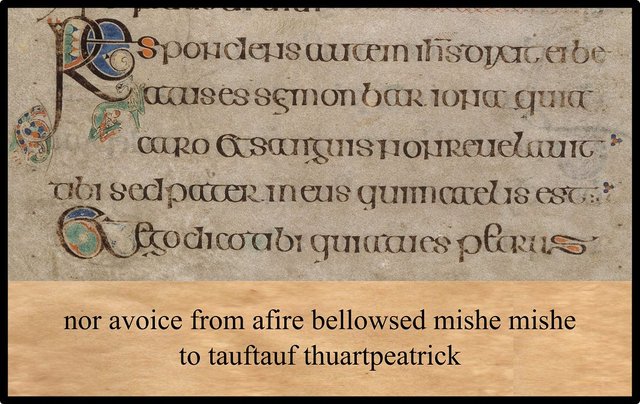
The second paragraph of James Joyce’s Finnegans Wake comprises seven clauses. The third of these was first drafted in October 1926:
nor avoice answered mishe mishe to tufftuff thouartpatrick. (Hayman 46)
This was revised to:
nor avoice redffire answered mishe chishe to tufftuff thouartpatrick. (Hayman 46)
By 15 November 1926, when Joyce included the latest draft of this passage in a letter to his patron Harriet Shaw Weaver, it was almost identical to the final, published version:
nor avoice from afire bellowsed mishe to tauftauf thuartpeatrick; (Letters of James Joyce, 15 November 1926)
I have no idea why Joyce replaced mishe mishe with mishe chishe, before eventually restoring the second mishe. What does chishe mean? Christian female (as in Chi + She)? In that letter to Harriet Shaw Weaver, Joyce appended some explanatory notes to the passage, among which we read the following:
Mishe = I am (Irish) i.e. Christian (Letters of James Joyce, 15 November 1926)
In an earlier article, I described how the clauses of this paragraph mark out seven stations or locations in the master bedroom of the Mullingar House, the pub in Chapelizod where Finnegans Wake is set. This particular clause is associated with the fireplace. The chimney flue connects the parents’ bedroom with their daughter Issy’s room, which is upstairs on the top floor of the house. Issy has a split personality, and conversations between her various identities are channelled down the chimney to the master bedroom, where they inform the dreams of her sleeping father.
This brief clause is one of the most pregnant in all of Finnegans Wake. In fewer than a dozen words Joyce alludes to three pivotal moments and three pivotal characters in the histories of Judaism, Christianity and Ireland:
- The Burning Bush and the Call of Moses
- The Founding of Christianity upon the Rock of St Peter
- The Introduction of Christianity to Ireland by St Patrick
Whether any of these were actual historical events is irrelevant. In Finnegans Wake no distinction is made between myth and history, memory and imagination, or fact and fiction.
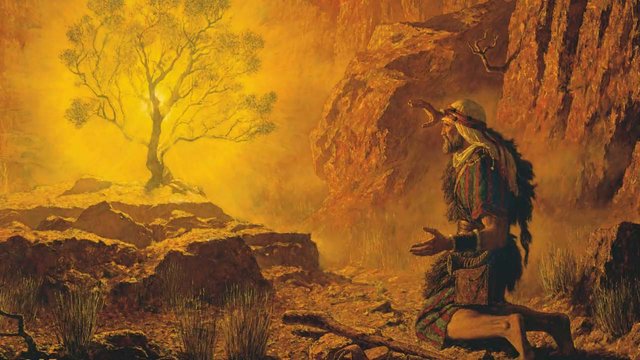
Moses and the Burning Bush
The famous story of the Burning Bush and the Call of Moses is familiar to most Christians. It is recorded in Exodus 3-4:
Now Moses kept the flock of Jethro his father in law, the priest of Midian: and he led the flock to the backside of the desert, and came to the mountain of God, even to Horeb. And the angel of the Lord appeared unto him in a flame of fire out of the midst of a bush: and he looked, and, behold, the bush burned with fire, and the bush was not consumed. And Moses said, I will now turn aside, and see this great sight, why the bush is not burnt. And when the Lord saw that he turned aside to see, God called unto him out of the midst of the bush, and said, Moses, Moses. And he said, Here am I. And he said, Draw not nigh hither: put off thy shoes from off thy feet, for the place whereon thou standest is holy ground. Moreover he said, I am the God of thy father, the God of Abraham, the God of Isaac, and the God of Jacob. And Moses hid his face; for he was afraid to look upon God ... And Moses said unto God, Behold, when I come unto the children of Israel, and shall say unto them, The God of your fathers hath sent me unto you; and they shall say to me, What is his name? what shall I say unto them? And God said unto Moses, I Am That I Am: and he said, Thus shalt thou say unto the children of Israel, I Am hath sent me unto you. (Exodus 3:1-6 ... 3:13-14)
A voice from a fire calls: Mosheh, Mosheh, which is the Hebrew for Moses. When Moses asks God what his name is, the voice replies, I am that I am. The Irish for I am is mise (pronounced misha). So Joyce’s mishe mishe echoes both names: Moses’ and God’s.
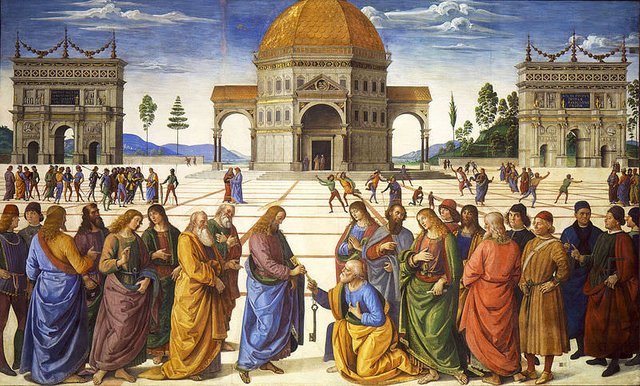
Thou art Peter
Moving from the Old to the New Testament, we come to another familiar passage of Scripture:
And I say also unto thee, That thou art Peter, and upon this rock I will build my church; and the gates of hell shall not prevail against it. And I will give unto thee the keys of the kingdom of heaven: and whatsoever thou shalt bind on earth shall be bound in heaven: and whatsoever thou shalt loose on earth shall be loosed in heaven. (Matthew 16:18-19)
It is surely significant that the opening page of Finnegans Wake contains an allusion to the Biblical phrase, Thou art Peter, while the closing page echoes another phrase from the very same passage, I will give unto thee the keys of the kingdom of heaven :
Lps. The keys to. Given! (The Restored Finnegans Wake 493)
Also folded into this image is an allusion to Arrah-na-Pogue, a 19th-century play by Dion Boucicault, in which a woman helps a condemned man to escape by passing him a secret message through a kiss. This melodrama is another of those key works that are essential reading for a proper understanding of Finnegans Wake.
It need hardly be pointed out that Christ’s words—Thou art Peter, and upon this rock—involve a pun on the Greek words Petros (Peter) and petra (rock). Is this the wellspring from which all the puns of Finnegans Wake flow? Lots of puns at Finnegans Wake.
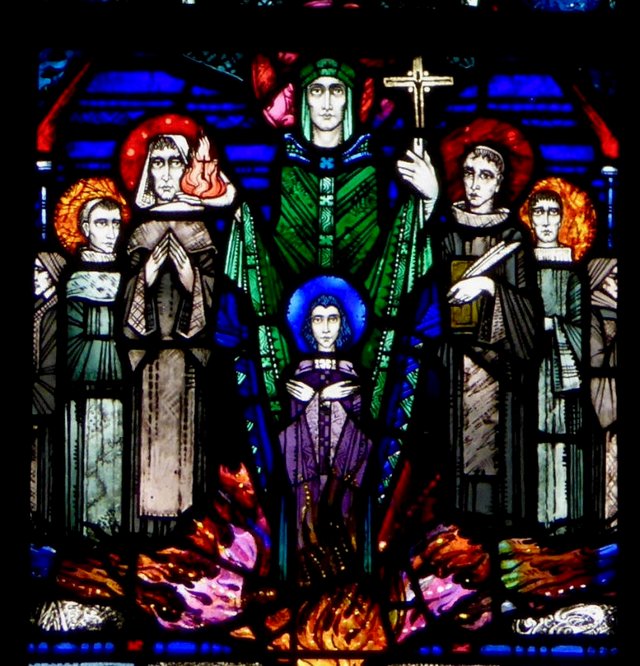
St Patrick
In Finnegans Wake, one of Joyce’s principal sources for information on the country’s patron saint, Patrick, was John Bagnell Bury’s The Life of St Patrick and His Place in History (Atherton 239). Here is Bury’s account of how St Patrick lit the Paschal fire in 433 CE in defiance of the pagan High King of Ireland Loigaire:
The bitter hostility of the Druids and the relations of Loigaire to Patrick were worked up by Irish imagination into a legend which ushers in the saint upon the scene of his work with great spectacular effect. The story represents him as resolving to celebrate the first Easter after his landing in Ireland on the hill of Slane, which rises high above the left bank of the Boyne at about twelve miles from its mouth. On the night of Easter eve he and his companions lit the Paschal fire, and on that selfsame night it so chanced that the King of Ireland held a high and solemn festival in his palace at Tara where the kings and nobles of the land gathered together. It was the custom that on that night of the year no fire should be lit until a fire had been kindled with solemn ritual in the royal house. Suddenly the company assembled at Tara saw a light shining across the plain of Breg from the hill of Slane. King Loigaire, in surprise and alarm, consulted his magicians, and they said, “O king, unless this fire which you see be quenched this same night, it will never be quenched; and the kindler of it will overcome us all and seduce all the folk of your realm.” ... But afterwards [Loigaire] bade Patrick to him, purposing to slay him; but Patrick knew his thoughts, and he went before the king with his eight companions, one of whom was a boy. But as the king counted them, lo! they were no longer there, but he saw in the distance eight deer and a fawn making for the wilds. And the king returned in the morning twilight to Tara, disheartened and ashamed. (Bury 104 ... 106)
According to tradition, Patrick was consecrated a bishop by Germanus of Auxerre (Bury 59) and sent to Ireland to baptize the pagans. The German verb to baptize is taufen.
A bellows is an instrument used to encourage a fire. There is probably one in the master bedroom of the Mullingar House. Joyce glossed his use of this word thus:
bellowed [sic] = the response of the peatfire of faith to the windy words of the apostle (Letters of James Joyce, 15 November 1926)

In Finnegans Wake, St Patrick is yet another foreign invader, who arrives from across the water to displace HCE (the Archdruid of pagan Ireland). Like Sir Tristram, he is the Oedipal character, represented in Joyce’s notes and drafts by the siglum on the right. This three-legged sign is a conflation of the sigla for Shem and Shaun, HCE’s sons, because the Oedipal figure embodies both brothers.
Patrick is a foreign—Roman—name, so Joyce Irished it up by adding allusions to peat (turf) and ricks (haystacks):
This saint baptizes (tauftauf) the peat rick, Ireland; (Campbell, Robinson & Epstein 27)
Is there also a play on Pete trick, suggesting that Patrick’s Christianity is all a fraud? It is interesting that one of the most prominent representatives of the Catholic Church in Ulysses is called Father Conmee. Subtlety was never Joyce’s strong suit.
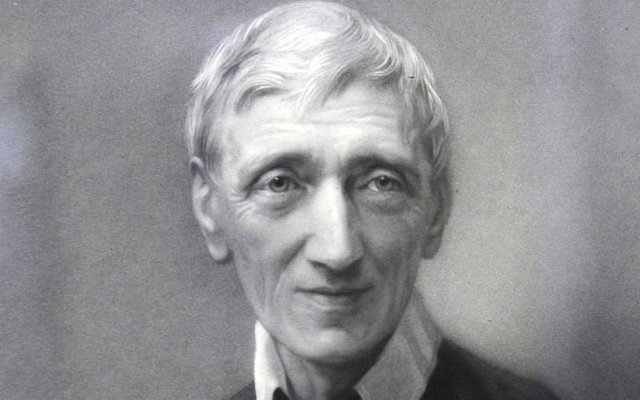
A Voice from Afar
There may also be an allusion in this passage to a poem written by Cardinal John Henry Newman. A Protestant convert to Catholicism, Newman was instrumental in founding Dublin’s Catholic University (now University College Dublin), where Joyce was educated. In 1829, when Newman was at his summer retreat in Horspath, he wrote the following meditation on death:
Weep not for me;—
Be blithe as wont, nor tinge with gloom
The stream of love that circles home,
Light hearts and free!
Joy in the gifts Heaven’s bounty lends;
Nor miss my face, dear friends!I still am near;—
Watching the smiles I prized on earth,
Your converse mild, your blameless mirth;
Now too I hear
Of whisper’d sounds the tale complete,
Low prayers, and musings sweet.A sea before
The Throne is spread;—its pure still glass
Pictures all earth-scenes as they pass.
We, on its shore,
Share, in the bosom of our rest,
God's knowledge, and are blest.
The voice from afar that disturbs the sleeping innkeeper in Finnegans Wake is the voice of his daughter, Issy, transmitted via the chimney from her room upstairs. But in Finnegans Wake, there is often a blending of characters and of time, so the voice of Issy is also the voice of his late wife—a voice from the afterlife, like Newman’s voice from afar. As I pointed out in an earlier article, I believe that Finnegans Wake is set at different times, depending on which level of narrative you are following:
As a depiction of a single night, Finnegans Wake opens at 11:32 pm on Saturday 12 April 1924 and ends the following morning. The sleeper is the seventy-year-old landlord of the Mullingar House. He is a widower and his daughter Issy is married and has left home. On this level, there is no one in the room upstairs and the voice from afar can only be his late wife’s voice coming to him from the afterlife (though surely not from the fires of Hell).
As a depiction of a single day, Finnegans Wake begins at 11:32 am on the morning of Friday 21 March 1884 and it ends at 11:32 am the following morning. 21 March 1884 was the birthdate of Joyce’s wife Nora Barnacle. Note that Nora’s name is encoded in the phrase: Nor avoice from afire. On this narrative level, the landlord is only thirty-years-old, and his daughter Issy is a young girl who sleeps upstairs and talks to herself incessantly.
The chimney flue is like a telegraph that allows Issy to communicate secretly with her father. Mishe mishe to tauftauf sounds like the greeting a child might make on a walkie-talkie or tin can telephone. The word telephone is comprised of the Greek words for a voice and afar and was coined by Alexander Graham Bell (bellowsed?). Did the Mullingar House have a telephone in the 1920s?
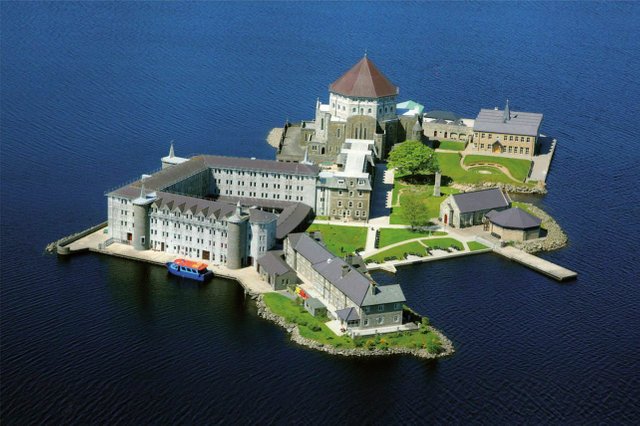
And finally
There are more secrets locked up in these ten words than can be explored in one short article. The diligent reader can discover them for himself using the Useful Resources listed below. I will, however, briefly mention two important ones before signing off.
St Brigid, the Mary of the Gael, was the female equivalent of St Patrick. But she was actually a pagan goddess, who was euhemerized by the Christians. She was associated with an eternal fire in Kildare (Giraldus Cambrensis et al §§34-36). In Finnegans Wake Brigid is one of Issy’s roles.
The association of St Patrick and the fireplace also reminds one of St Patrick’s Purgatory, a popular place of pilgrimage in Ireland where the saint is said to have been given a vision of Purgatory in order to convince the skeptics among his converts.
References
- John S Atherton, The Books at the Wake: A Study of Literary Allusions in James Joyce’s Finnegans Wake, Southern Illinois University Press, Carbondale IL (1959, 2009)
- John Bagnell Bury, The Life of St. Patrick and His Place in History, Macmillan & Co Ltd, London (1905)
- Dion Boucicault, Deirdre McFeely (editor), Arrah-na-Pogue; or The Wicklow Wedding, Classic Irish Plays (2017)
- Joseph Campbell, Henry Morton Robinson, Edmund L Epstein (editor), A Skeleton Key to Finnegans Wake, New World Library, Novato CA (2005)
- Giraldus Cambrensis, Thomas Forester (translator), Thomas Wright (editor), The Topography of Ireland, In parentheses Publications, Cambridge, Ontario (2000)
- David Hayman, A First-Draft Version of Finnegans Wake, University of Texas Press, Austin TX (1963)
- James Joyce, Finnegans Wake, Faber & Faber Limited, London (1939)
- James Joyce et al, The Letters of James Joyce, Volumes I, II, III, Stuart Gilbert (editor), Richard Ellmann (editor), Viking Press, New York (1966)
- John Henry Newman, Frederic Chapman (editor), The Poems of John Henry Newman, John Lane Company, London (1905)
- Danis Rose, John O’Hanlon, The Restored Finnegans Wake, Penguin Classics, London (2012)
Image Credits
- Tu Es Petrus: The Book of Kells, Folium 77v, Matthew 16:17-18,© 2012 The Board of Trinity College Dublin, Fair Use
- Moses and the Burning Bush: © Friberg Fine Art Incorporated, Arnold Friberg (artist), Fair Use
- Christ Giving the Keys to Saint Peter: Wikimedia Commons, Pietro Perugino (artist), Public Domain
- St Patrick Lights the Paschal Fire: Church of St Peter and Paul, Athlone, Roaringwater Journal, Richard King (artist), Finola Finlay (photographer), Fair Use
- John Henry Newman: Catholic News Service, Catholic Church of England and Wales, Fair Use
- Station Island, Lough Derg: © 2018 Lough Derg, Fair Use
Useful Resources

Really this is an excellent post. I like your writing style. Thanks for sharing us.
Deep and interesting text truth I like many posts of this type because it reflects the culture in its maxims successful expressions and blessings!
They took the year they wrote it and they did it. That's why the one that just published to me is a very entertaining and informative topic. Thanks and regards
Good publication, novel written by the great James Augustine Aloysius Joyce the most famous writer of Ireland in the twentieth century, to say that he was a "hard" in his time. regards
What an incredible post, I really love it, Excellent quality content, my friend who appreciates a lot, this is the kind of content we need in Steemit, thank you very much my dear friend and many greetings!
Thank you very much for the kind comments.
great information that you just uploaded to steemit, where I notice and I can learn from the purgatory of St. Patrick, which I find very wonderful. regards
Uff an amazing post, the best I've read in the last days in the community of Steemit, all very well summarized and easy to understand, this perfect, I really liked the part "Thou art Peter", a post too informative that they have To be highly valued by Steemit users, you have my full support my dear friend, many blessings!
Thank you, and many blessings!
this post is very informative for the whole steemit community, please keep posting you have my full support! incredible content
Thank you. I appreciate your support.
what great information his. He is right when he says "There are secrets locked in these ten words that can be explored in a short article".
That of San Patricio purgatory seems to me simply spectacular, a very educational publication and with very important information, I love this type of content, thank you for such a good publication, greetings from Colombia!
Thank you. Greetings from Ireland!